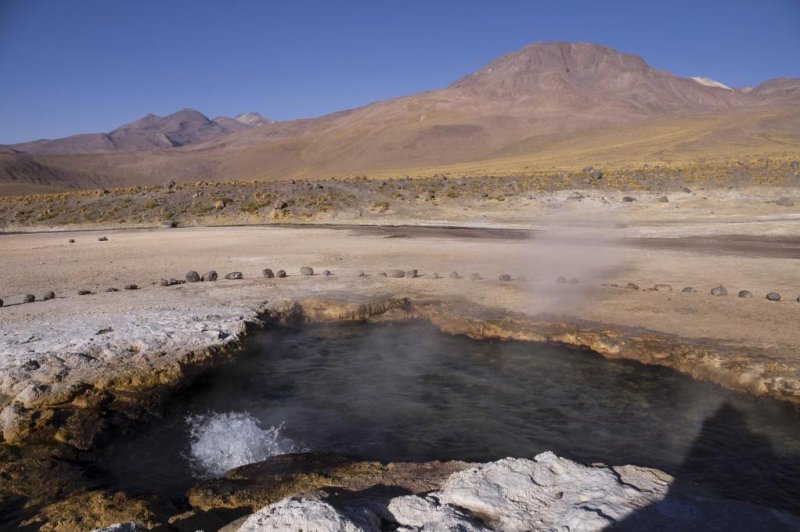Researchers collected bacteria from hot springs in Italy, Russia and Chile's El Tatio region, pictured here. Photo by Yaroslav Ispolatov/Rutgers University
March 25 (UPI) -- Scientists previously thought bacteria needed a host to travel the globe. However, new research suggests bacteria can travel thousands of miles through the air.
"Our research suggests that there must be a planet-wide mechanism that ensures the exchange of bacteria between faraway places," Konstantin Severinov, a professor of molecular biology and biochemistry at Rutgers University, said in a news release. "Because the bacteria we study live in very hot water -- about 160 degrees Fahrenheit -- in remote places, it is not feasible to imagine that animals, birds or humans transport them."
Severinov and his colleagues estimated atmospheric currents ensure distant and remote parts of the world share common bacteria.
To better understand the links between faraway bacterial communities, scientists studied the genetic signatures left by interactions between bacteria and viruses.
Bacteriophages, viruses that infect bacteria, are everywhere. They are the most abundant life form on the planet. They also have a significant -- and measurable -- influence on microbial communities.
For the study, Severinov and his research partners collected Thermus thermophilus bacteria from hot springs across the globe -- in Chile, Italy and Russia. The samples were separated by thousands of miles.
When bacteria is infected by viruses, "molecular memories" are stored in sections of bacterial DNA called CRISPR arrays. The surviving bacteria cells pass on the snippets of viral DNA, the memories, to the next generation.
Before the study, scientists hypothesized the molecular memories of bacteria living on opposite sides of the planet would be quite different. Researchers also assumed the bacteria species would be shaped by unique evolutionary histories.
"What we found, however, is that there were plenty of shared memories -- identical pieces of viral DNA stored in the same order in the DNA of bacteria from distant hot springs," Severinov said. "Our analysis may inform ecological and epidemiological studies of harmful bacteria that globally share antibiotic resistance genes and may also get dispersed by air instead of human travelers."
Scientists shared their surprise findings Monday in the journal Philosophical Transactions of the Royal Society B. In followup studies, study authors plan to use planes, drones and research balloons to study bacteria in air samples collected at different altitudes across the globe.















